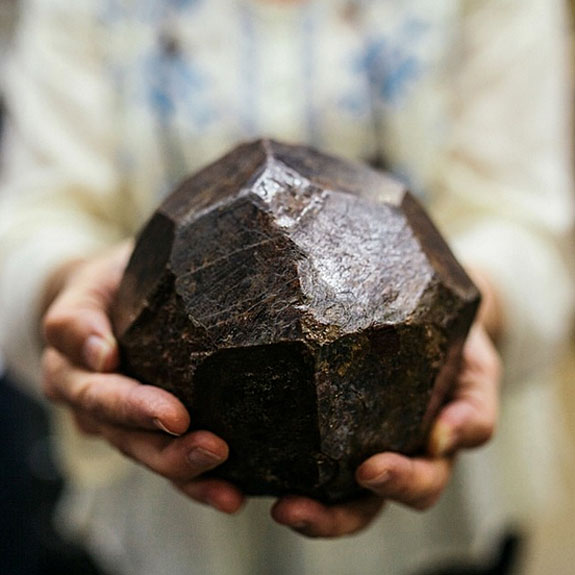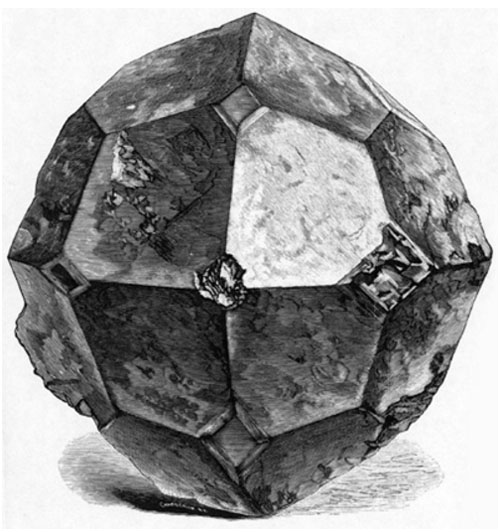Once the pride of Manhattan, the "Subway Garnet" — a 9 pound 10 ounce reddish-brown crystal of the almandine variety — is currently relegated to a storage drawer on the fourth floor of the American Museum of Natural History. To add insult to injury, there's mounting evidence that it shouldn't have been called the Subway Garnet at all.

In a recent article in The New York Times, George Harlow, the curator for the earth sciences department at the museum, explained why the Subway Garnet has been out of the public eye.
He said that only 2 percent of the vast collection is on view, so any visiting geologist who wants to see what may be the most famous example of January's birthstone must make an appointment with the Department of Earth and Planetary Sciences. The Museum's mineral and gem collections total in excess of 100,000 specimens.
While it had been a museum headliner starting in the late 1960s, today the seven-inch-wide stone is nearly forgotten.
And what about the name? Legend states that the Subway Garnet was discovered by a city worker in 1885 near the corner of 35 Street and Madison Avenue in New York City during the excavation for the New York City subway system. Early accounts of the garnet's discovery and the timeline of the New York City subway system seem to contradict two key "facts" about the gem.
First, the New York City subway official broke ground in 1900, 15 years after the discovery of the Subway Garnet. It was very unlikely it was found during a subway-related excavation. It was much more likely that it was found during a sewer excavation. Perhaps, the name "Sewer Garnet" didn't carry the right ambiance for the rare gem, which boasts 24 natural facets.

The New York Times recently reported that the massive crystal was, in fact, found eight feet underground during a sewer excavation in August of 1885. William Niven, the owner of a business that sold gemstones and minerals, claimed that he picked up the garnet as he was passing by the site, just after an unnamed laborer dumped it on the street during the excavation. Dr. Niven then sold it for $100 to mineralogist George F. Kunz.
Also, early reports of the garnet's discovery seem to point to a different location of origin on 35th Street. Mineral expert John Betts discovered documentation from an 1885 meeting by the New York Academy of Sciences that reported on "a large almandine garnet, seven inches in diameter, and nine and one-half pounds weight, found during the past week in an excavation on 35th street, between Broadway and Seventh avenue."
The gem eventually made its way to the New York Mineralogical Club and then, in 1968, to the American Museum of Natural History in New York City, where it was displayed proudly at the entrance to Mineral Hall. Sadly, the excitement faded and the Subway Garnet was demoted to a storage drawer out of the public's view.
There is still hope that the Subway Garnet will see the light of day and regain its old luster, according to Harlow.
“Nothing’s been finalized, but I believe plans are afoot,” Harlow told The New York Times. “I’d certainly like to see it available to the public before I retire.” Harlow has been with the museum for 40 years.
Credits: Facebook/American Museum of Natural History; Illustration via the New York Academy of Sciences Transactions 5 (1886).
No comments:
Post a Comment